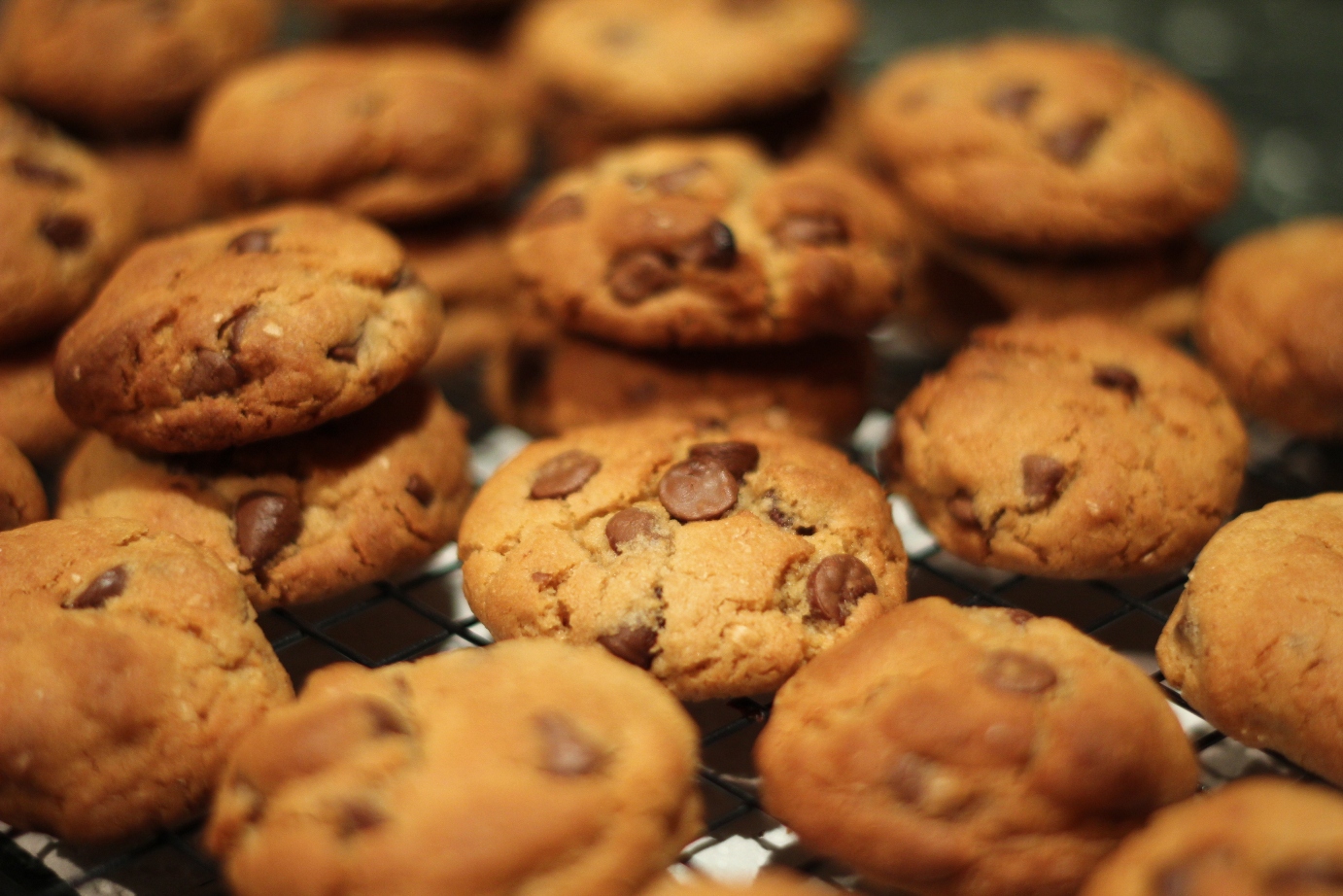
The Science of Cookies
I studied food science. No, that’s not nutrition. Food science, as in the chemistry, physics and microbiology behind making the food that you and I buy from the supermarket.
People forget that the majority of the food on our shelves including the fruit and vege is all one big science experiment. I am not meaning genetically modified; I mean how it gets to you in the condition that is does. Don’t believe me? How on earth do bananas travel all the way from the Philippines still green yet as soon as you take them home they turn black within the week? I could tell you that. Why do we need light proof bottles for our milk? I can answer that one too.
Behind the façade of pretty packaging (that’s food science in itself too) there are teams and teams of brilliant minds making breakthrough discoveries and developments that get food to you that’s fresher, faster, tastier, cheaper and better for you (ok, sometimes not). There is a lot more to food than what meets the eye. Let me demonstrate to you using some simple (kitchen) bench chemistry.
Take the beloved cookie. How do you like yours? Soft? Chewy? Crisp? Thick? Thin? The final sensory characteristics of your cookie depend on a multitude of factors. These include emulsifiers, egg proteins, raising agents, water content of the sugar used, amount of flour used, fat type and the state of the fat when incorporated.
Let me explain how to make the perfect cookie. Of course there is no perfect cookie, that is totally subjective, but here are some things to keep in mind when next making your ideal cookie creation.
Butter
You will find butter in almost every cookie recipe. Butter has a reasonably sharp melting point as it consists mainly pure saturated dairy fats so the range is narrow. If you use melted butter you release the water from the matrix which is then absorbed by the gluten in the flour. The moisture is locked in and so makes a moist and chewy cookie. As the butter has also already been melted the batter will spread thinly before the batter sets creating a thin and chewy cookie. If you start off with chilled or room temperature butter it will melt less therefore making a taller, thicker cookie. If you use more butter the batter will be runnier once warmed in the oven also spreading the cookie thinner. By creaming the butter with the sugar it helps to not only dissolve the sugar but the sharp edges of the sugar crystals cut into the fat matrix which creates air bubbles. The more air bubbles the more easily other ingredients can be blended in, making a lighter, fluffier cookie.
You can choose to chill your cookie dough before spooning out and baking it. By cooling the fat you give your dough a head start in the rising and setting process. By the time the butter melts the set temperature will almost have been reached, also producing a thicker cookie.
Sugar
Sugar choice also makes a significant impact. Brown sugar gets its colour from residual molasses remaining on the crystals. The molasses is what is responsible for the deeper and richer colour as well. Molasses is highly hydroscopic, which means it attracts water. By increasing the brown sugar to white sugar ratio in your cookie you will get a more moist and chewy result. The more white sugar you use, the crisper the final product will be. Why do cookies firm up once they are removed from the oven? Well, the sugar crystals melt in the hot oven to form a liquid. This makes the cookies very fragile and fluid whilst still hot. As they cool the sugars regain their rigid crystalline structure giving back the cookies a little more of their familiar firmness.
Rising agents
Some cookie recipes call for a raising agent. There are two types: baking soda and baking powder. Baking soda is a base and will reduce the overall acidity of the batter. Less acid in the mix means that the setting temperature will be higher, this gives the cookie more time to spread out and therefore a thinner cookie is produced.
Baking powder consists of both a base (in the form of a carbonate) and two acids usually. When baking powder comes into water an acid base reaction occurs and carbon dioxide is released. The gas production forces the batter upwards making it rise. As the batter will have a greater acidity than when baking soda is used, the setting temperature will be lower giving the cookies less time to spread.
Flour
The type of flour you use will also have an impact. Strong flours, or bread flours that are high in gluten will give you a more moist and chewy result in comparison with using cake or plain flour. Gluten, the main protein found in flour, loves to absorb water. The more gluten in your cookie the more water that will be bound inside, making it moist. Since gluten is a stretchy protein when hydrated, cookies with more gluten will also be chewier than their less glutinous counterparts. Cookies made with cake flour will be slightly crispier.
Eggs
Eggs play a number of roles in the cookie making process. Firstly, the yolk contains lecithin, a natural emulsifier. An emulsifier is something that helps to stabilise two phases that would otherwise repel each other, like fats in a watery environment. The egg yolk helps to combine the fats, sugars, proteins and water and keep them stabilised. Eggs also expand when cooked (remember those scrambled eggs you last made) so a cookie that has more egg in it will be more likely to be fluffier. If you want a thinner cookie, substitute a proportion of the egg with milk and less expansion will occur. The protein in an egg also offers structural integrity when it denatures. Denaturation occurs at a defined temperature, at this point the protein become irreversibly deformed and rigid. This denaturation will add to the rigid matrix so that your cookie doesn’t turn out to be a sloppy mess.
If you have any questions whether it be food science, baking, cooking or even simply food related just give me a yell! I love answering your questions!▼

